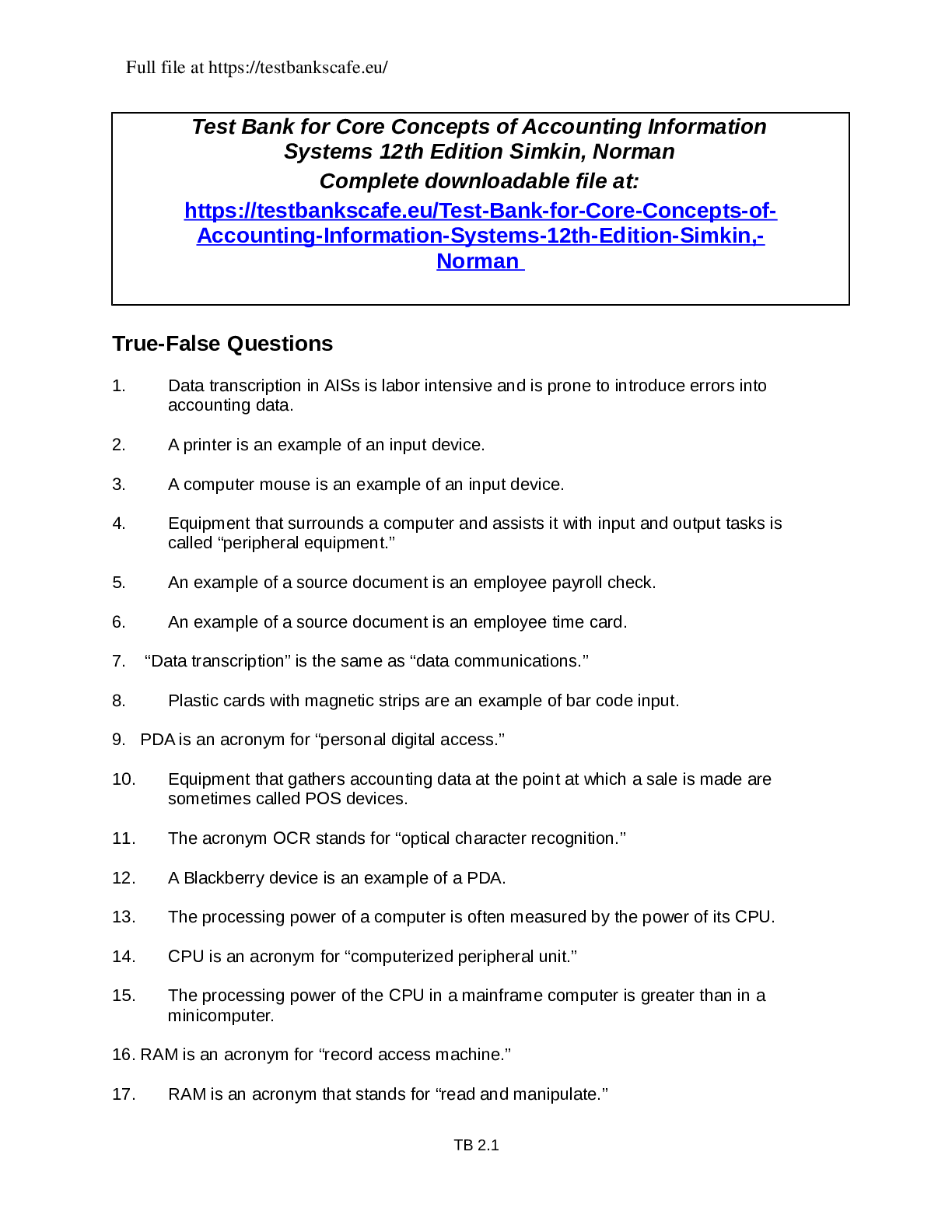Test Bank for Core Concepts of Accounting Information Systems 12th Edition Simkin, Norman
Course
Subject
Chemistry
Category
Questions and Answers
Pages
13
Uploaded By
ATIPROS
Preview 4 out of 13 Pages


Download all 13 pages for $ 8.50
Reviews (0)
$8.50
